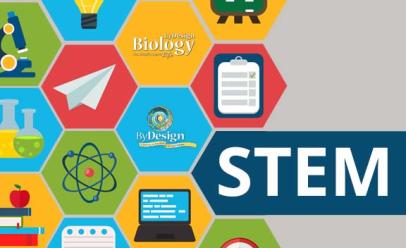 By: Kendall Hunt RPD with contributions from the editorial team of ByDesign Science grades 1-8
By: Kendall Hunt RPD with contributions from the editorial team of ByDesign Science grades 1-8
STEM , is an acronym that stands for Science, Technology, Engineering, and Mathematics, continues to be a major focus for education in the United States. Classrooms across the nation are moving away from having teaching and learning happen in silos, but instead happens through the integration of inquiry across disciplines. When students engage in open inquiry techniques, you can help your students develop the skills necessary to assist them in their own investigations and to help develop and sharpen their career paths.
One of the main initiatives behind the STEM push is to have students practice scientific skills through hands-on activities that ideally address real-world problems. STEM offers an approach to education that values college and career readiness by preparing students for their lives beyond the classroom. The importance of STEM in the classroom will continue to increase as educators look to better prepare students for their futures. The ByDesign Science for grades 1-8 and the ByDesign Biology program have these opportunities built into the curriculum, with guides for teachers to follow while allowing students to explore a wide range of topics.
The first opportunity for students to engage in STEM activities in the ByDesign Science program is the built in open inquiry investigations that are included at the beginning of each unit. Students are allowed to explore any topic that relates to the unit they are studying. Each inquiry develops their analytics and mathematics skills as they research and establish data to support how effective their solution is or to include other related data in support of their reasoning and conclusions. Throughout this learning process students can act like a scientist and develop their very own observations, formulate their own hypothesis, test their theory, measure their results, and create an individualized explanation.
The ByDesign Science program engages students in a multitude of STEM activities throughout each lesson with varying degrees of difficulty and with some opportunities to explore more open-ended questions. One of these opportunities is with the Engineering Practices found at the end of each unit’s Student Science Journal activities. Most of these activities are guided inquiries, which means that a question is posed for students and limited guidance is provided to help get them started on their quest to find answers. What’s different, however, is that students are free to explore and to structure their own investigations, with few limitations.
As students’ are exposed to an inquiry based curriculum while progressing through elementary, middle school, and high school, they accumulate knowledge from disciplines such as biology, chemistry, physics, as well as the latest technology. Science includes all of these topics but the usual theme of science is process of discovery—a systematic search for understanding the natural world. As they grow into their professional careers they will become challenged to present complex concepts and look to new and innovative ways to solve problems.
Part of true STEM-based research is failure. Failures need to be treated as an opportunity to learn and continue searching for a better solution. Failure may discourage some students because they did not achieve their desired outcome, so it is important to frame a failure as data collection and continue to encourage students to look for a better answer. Teachers can model this by giving a demonstration that does not go as planned and talk through the analysis about what variables caused the unexpected results and how they could be corrected or improved.
Typically, traditional curriculum would likely have students looking for a definitive correct answer to many of the lab activities. However, when teaching with STEM concepts in mind, the process students use to get to an answer is more important and engaging. Students may find a solution to their problem and present their findings, but there may be a better solution available. You may wish to challenge your students to conduct further research and additional trials to identify a better solution. Students should be asked to analyze their results and evaluate what they could have done differently or what additional questions they would like to analyze based on their results.
The idea behind incorporating STEM in the classroom is not to memorize or reinforce facts that other scientists have already discovered, but to rather encourage a new wave of innovative thinking. Of course, you want your students to understand the concepts they are studying, but students need to know how to go about finding a solution to a problem. Knowing how other scientists came to a certain conclusion can also help students understand the concept better. The skills used to find a solution are skills future employers are going to be looking for when they hire someone to develop the latest groundbreaking technology or to find the cure for a ravenous new disease.
Preparing K-12 students for STEM careers means exposing them to more rigorous STEM content. Our ByDesign Science and ByDesign Biology programs can help you so more students experience success with difficult science and math content, and schools can offer more challenging STEM courses. Middle and high schools should be offering STEM-related electives, and more high schools must offer students honors and AP level STEM courses. Do not be afraid to implement STEM concepts in your classroom. Embrace this as a challenge that can allow you to model for your students how you can research, experiment, and develop lifelong skills that will prepare them for their career.